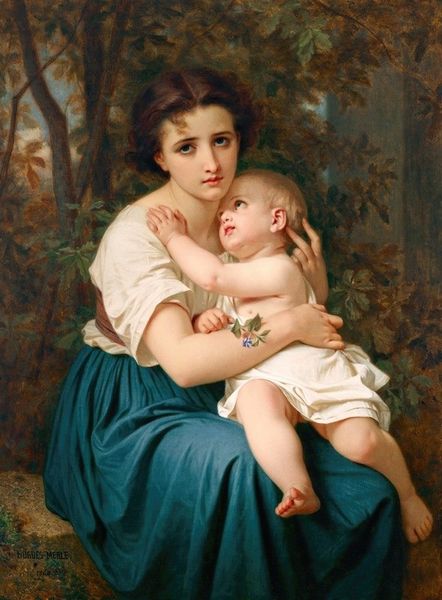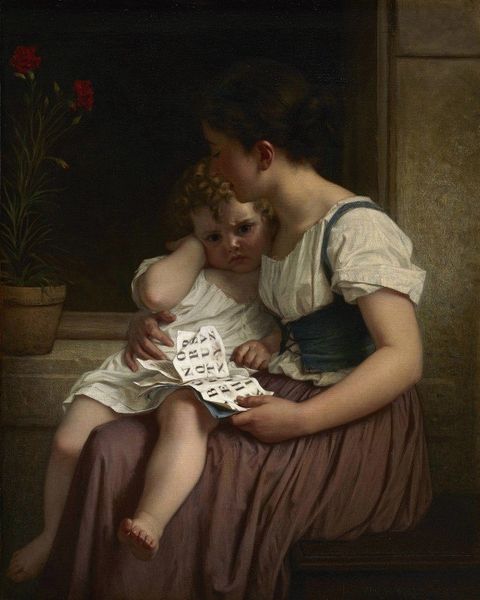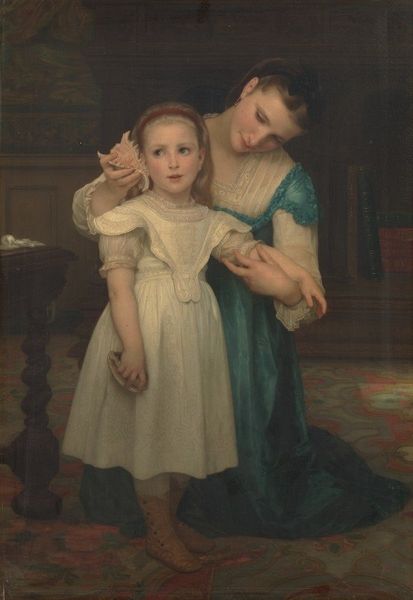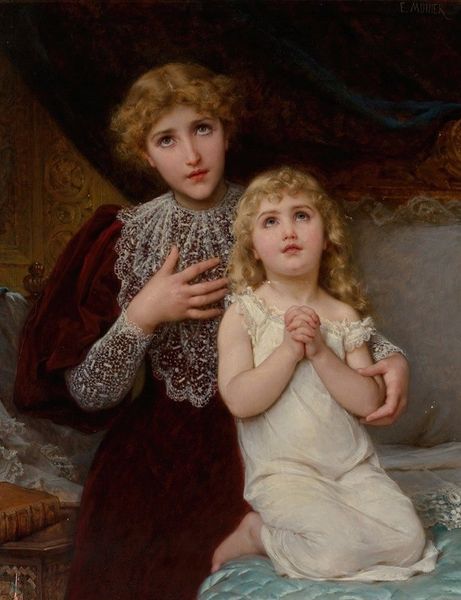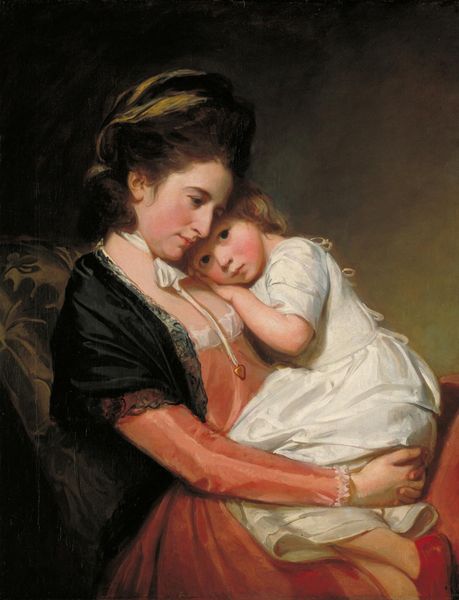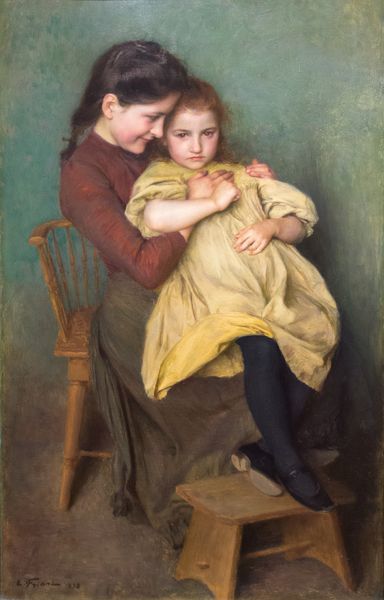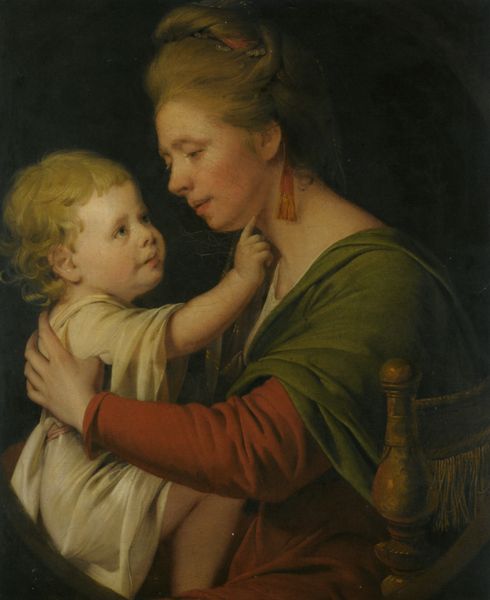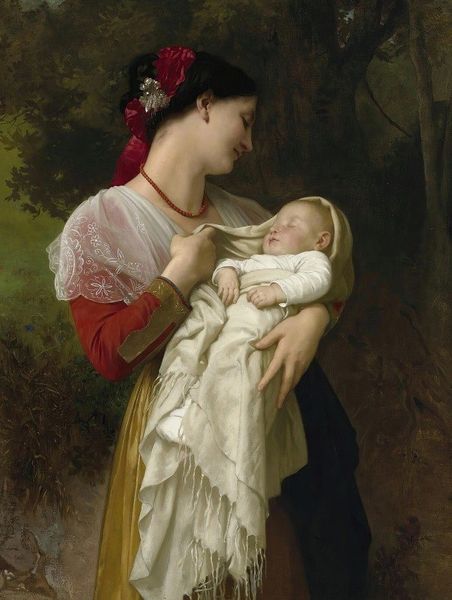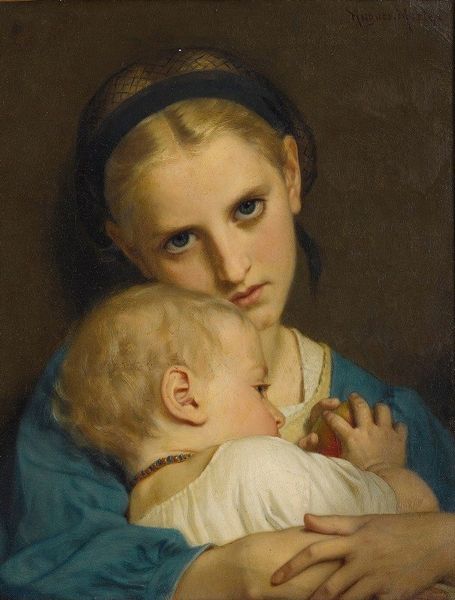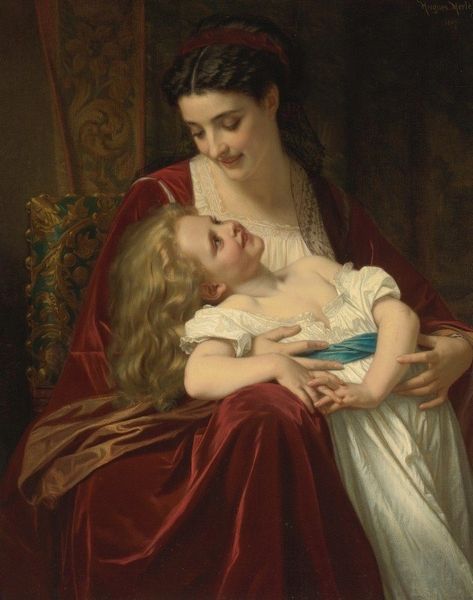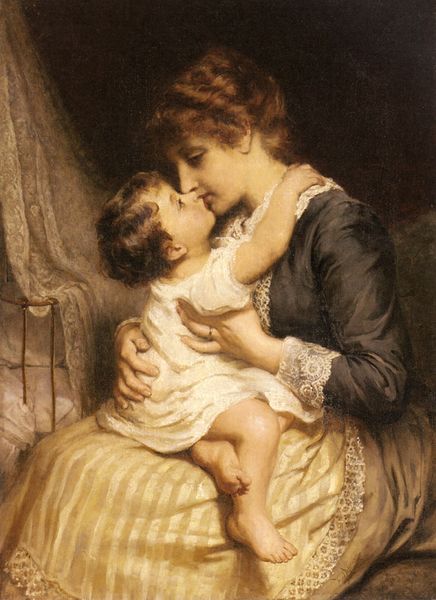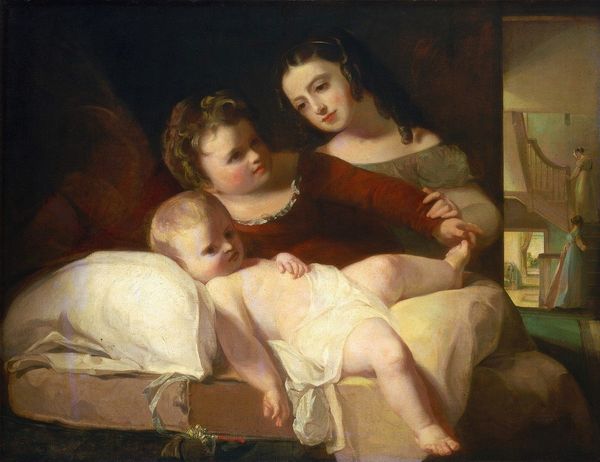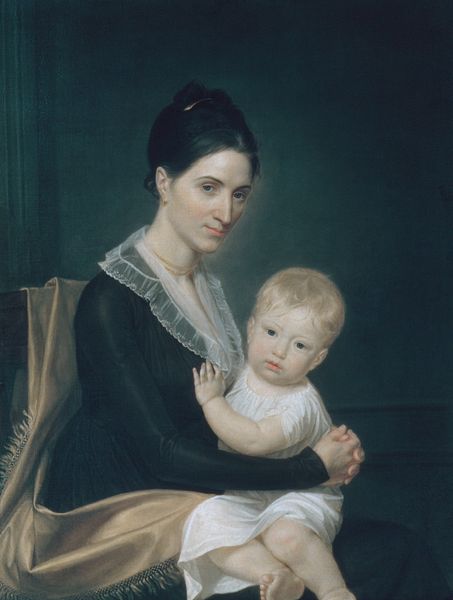
Copyright: Public Domain: Artvee
Curator: It’s intriguing, isn't it? The Romney portrait, "Ann Wilson with Her Daughter, Sybil," created with oil paint between 1776 and 1777... what catches your eye about its physical presence? Editor: Well, the subdued colors create a calm atmosphere. But I’m also interested in the materials themselves, beyond just being ‘oil on canvas.’ What do you see in this piece? Curator: I'm immediately drawn to the fabrics and the social context of their depiction. Consider the drapery – the heavy green material and its skillful rendering suggest a specific kind of industry and wealth supporting its production. How do you think that kind of display, that conscious depiction, contributes to our understanding of the work as more than just a representation? Editor: So, you're thinking about the labor involved in producing those clothes and the implied social status they communicate. Like a form of early advertising? Curator: Precisely. The deliberate inclusion of these details speaks volumes about the material conditions and societal values of the time. The brushstrokes themselves become evidence of labour. Look at how the smooth rendering of skin contrasts with the folds of the dress. Do you see a conscious hierarchy at play in the treatment of those surfaces? Editor: I do. The focus on the fabric makes me reconsider the time, skill, and raw materials required to produce such items. Curator: And that recognition transforms the painting, doesn't it? From a simple portrait to an examination of material culture and social standing. Editor: Definitely. I never considered textiles in portraiture as more than decorative. This changes my perception. Curator: Excellent. It's all about recognizing art as a product deeply intertwined with its social and material circumstances.
Comments
No comments
Be the first to comment and join the conversation on the ultimate creative platform.
